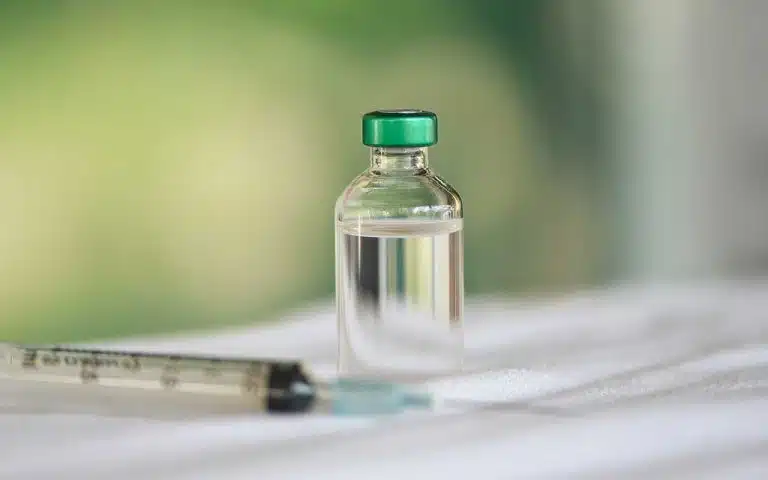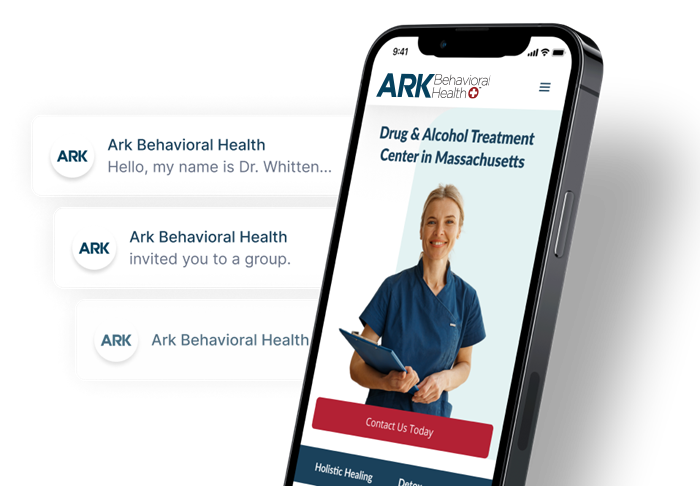Opioid Vaccines & The Treatment Of Opioid Use Disorder
- How An Opioid Vaccine Would Work
- Medication-Assisted Treatment
- Benefits Of An Opioid Vaccine
- Treating Opioid Use Disorder

As of this writing, the Covid-19 vaccine is being distributed to thousands of Americans daily, and promises an eventual end to the pandemic and a return to normalcy for Americans and individuals across the globe.
And even as vaccines play a definitive role in ending one public health crisis, there is potential for a new breed of vaccine to emerge and combat cases of opioid use disorder (opioid addiction) associated with the American opioid crisis.
How An Opioid Vaccine Would Work
Opioid vaccines would prime the body to reject a single opioid drug in the same way that the tetanus vaccine prompts the body to reject tetanus bacteria before it can cause physical harm.
When injected, adjuvants in the vaccine would antagonize the body’s immune system by design, prompting an immune response that would trigger cells to begin producing specific antibodies targeted to the particular antigen indicated by the vaccine.
In the case of an opioid vaccine, it would be a molecular marker found on a particular opioid like fentanyl, hydrocodone, or heroin.
Once this process is complete, those antibodies will begin sticking to the drug on the molecular level whenever it is introduced to the body. And once an antibody attaches to an opioid molecule, it becomes too large to pass the blood-brain barrier.
This prevents the drug from reaching the brain and attaching to opioid receptors, which in turn prevents vaccinated individuals from getting high on the drug or overdosing.
How Close Are Opioid Vaccines To Becoming A Reality?
Collaborators working for the National Institute of Health (NIH) Helping to End Addiction Long-term Initiative (NIH HEAL Initiative) are actively pursuing opioid vaccine development.
Preclinical versions of opioid vaccines have already been shown to be safe and effective in mice and rats.
Moreover, an oxycodone vaccine is now in the process of being tested on individuals with oxycodone use disorder. This process may eventually result in anti-opioid vaccines becoming a widely used treatment option.
These clinical trials are also investigating how effective the vaccine is against different opioid doses, and how long its effects last. The expectation is that a single vaccine formulation will provide several months of protection.
Current Medications Used To Treat Opioid Use Disorder
As of this writing, there are three FDA-approved medications used to treat opioid use disorder. These medication-assisted treatment (MAT) drugs include:
Methadone
Methadone is a slow, long-acting opioid drug used for general pain relief in medical settings, and for opioid use disorder treatment in approved treatment programs.
Methadone is taken as a liquid and activates the body’s opioid receptors, but does so without causing euphoria or dangerous central nervous system (CNS) depression.
This reduces opioid withdrawal symptoms and cravings while blocking the effects of other, more potent opioid drugs if they are also taken.
Buprenorphine
Buprenorphine is a partial opioid agonist that lowers the potential for harm due to opioid misuse.
As with methadone, the drug binds to opioid receptors but only activates them weakly. This can help manage withdrawal symptoms and cravings, and will greatly diminish the effect of other opioid drugs if taken.
Buprenorphine is available as a dissolving tablet, cheek film, or 6-month implant that is placed under the skin.
Naltrexone
Naltrexone is an opioid antagonist. This means that instead of controlling withdrawal and cravings by weakly activating opioid receptors, naltrexone simply blocks those same opioid receptors and fully prevents them from activating in the presence of an opioid drug.
This means that any opioids taken while naltrexone is active in the body will not have rewarding, pleasurable, or dangerous effects.
Naltrexone is only available to those who have not used opioids for at least seven days.
Benefits Of An Opioid Vaccine
Each medication used to treat opioid use disorder has specific benefits, limitations, and risks.
Vaccination could provide medical professionals and patients with another option. A vaccine could impart lasting protection against opioid abuse and overdose deaths associated with specific high-risk opioid drugs of abuse, with minimal side effects.
For instance, a heroin vaccine could safely be used in combination with other MAT options.
It would not interfere with naloxone (an opioid overdose antidote), and it would not interfere with other forms of chronic pain management, including prescription opioids and the body’s own endogenous opioids.
Treating Substance Use Disorder
Until an opioid vaccine is widely available, professional opioid addiction treatment programs are the best way to overcome opioid use disorders.
To learn about our addiction treatment programs and recovery services, including medication-assisted treatment for opioid addiction, please contact us today.
Written by Ark Behavioral Health Editorial Team
©2024 Ark National Holdings, LLC. | All Rights Reserved.
This page does not provide medical advice.
Centers for Disease Control and Prevention - Recovery Is Possible
National Institutes of Health (NIH) HEAL Initiative - A Shot Against Opioids
National Institute on Drug Abuse (NIDA) - How do medications to treat opioid use disorder work?

Questions About Treatment?
Ark Behavioral Health offers 100% confidential substance abuse assessment and treatment placement tailored to your individual needs. Achieve long-term recovery.
100% confidential. We respect your privacy.
Prefer Texting?
Our friendly support team is here to chat 24/7. Opt out any time.







 Learn More
Learn More








